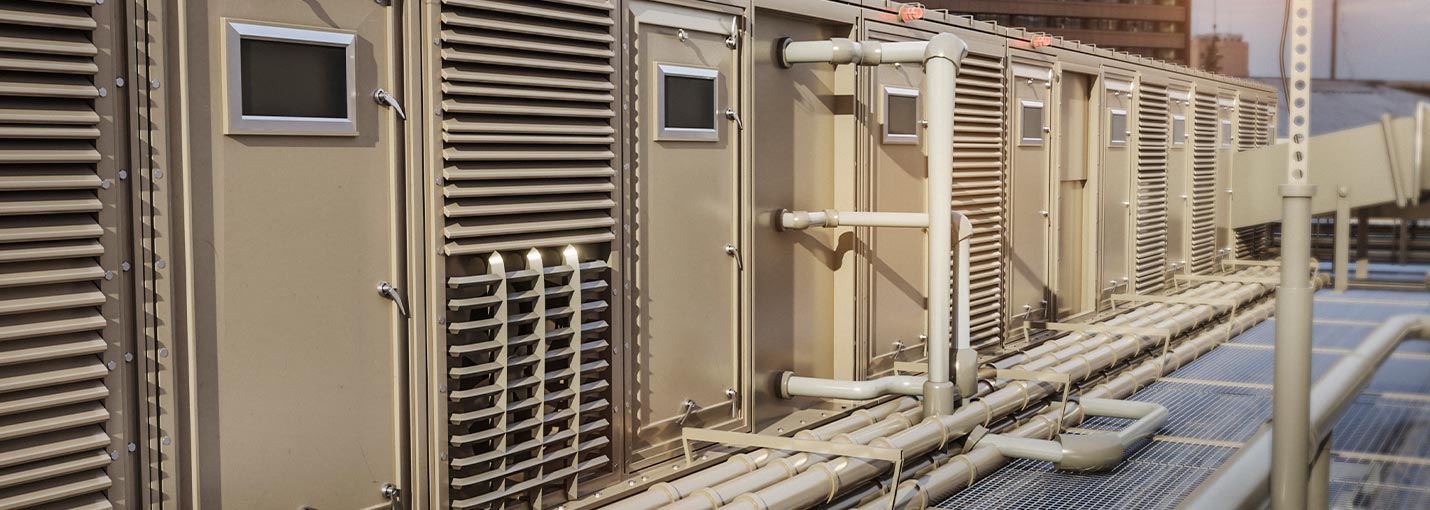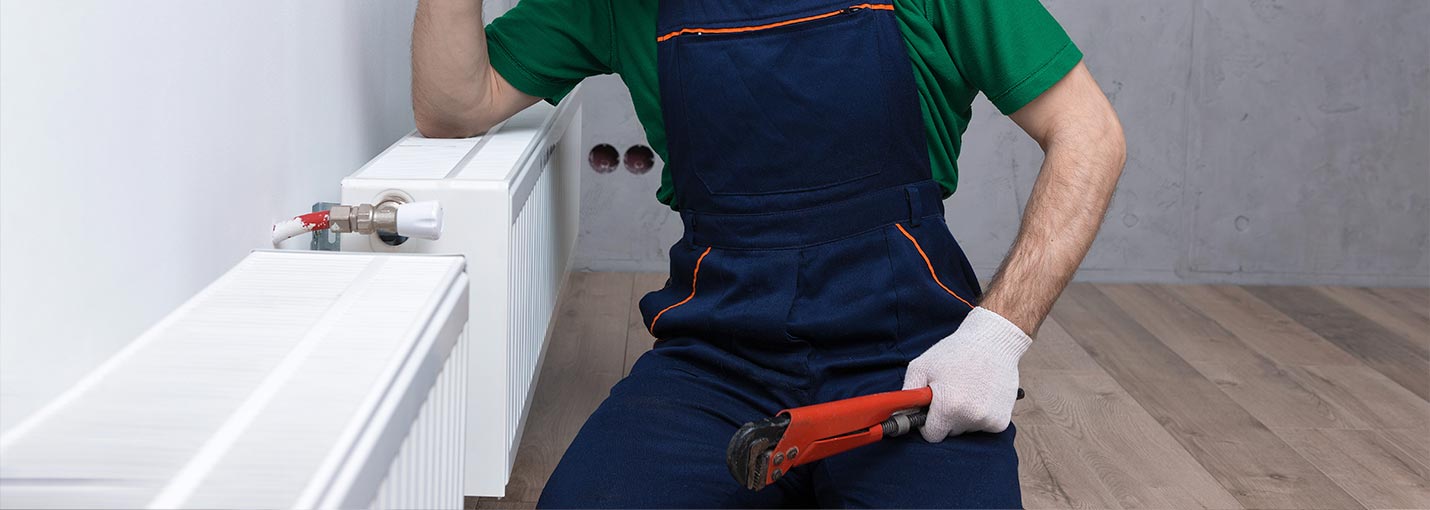Many older Heating / Ventilation and Air Conditioning systems contained harmful asbestos.
It’s important to ensure your home is free from asbestos to protect you, your family and everyone who visits.
Until the 1980s, countless home construction materials and consumer goods in the U.S. contained asbestos. Home flooring products, roofing shingles, ceiling tiles, and insulation likely had the fibers ingrained in them, and because these are microscopic and difficult to detect, they could easily be ingested when disturbed.
Despite bans on using asbestos in new buildings, older buildings may contain legacy asbestos that can still be hazardous.
Thanks to the heat resistance and durability of asbestos, HVAC systems installed before the 1980s (when asbestos became strictly regulated) were no exception. Asbestos was used in coal and oil burning furnaces, boilers, air duct covers, door gaskets, and piping insulation, and with so many areas causing exposure risk, it’s best for homeowners to call in a professional testing company. Not doing so could mean serious health issues down the road.
This article will explore the different ways that asbestos was historically used in HVAC systems, how these systems can be tested for its presence, and how to properly remove asbestos if it’s found.
!
In terms of death rate, Louisiana had 5.9 asbestos-related deaths per 100,000 population during the 1999-2017 period. (Higher than the national average death rate of 4.9.)


Asbestos Use in HVAC Systems
For years, asbestos paper and lagging cloth were readily used by HVAC installers as pipe insulation and liner in residential homes across the country. In addition, cloth, paper, and other insulating materials containing asbestos were used to reinforce heating ducts. For example, a duct system encountering or experiencing air leakage might have been wrapped in insulating paper or cloth or sealed using a unique adhesive. Sometimes, duct dampers were utilized to secure joints or reduce vibration.
Asbestos was relatively inexpensive and was known for its durability, heat resistance, soundproofing qualities and widespread availability. And with the risks of asbestos exposure still largely unknown, it was hailed as a “miracle mineral.”
Asbestos-related Illnesses
The problem with asbestos is that it contains microscopic fibers which, when airborne and breathed in, are embedded into the lungs. Once this happens, the fibers latch on tightly to their lining and cannot be removed. Over time, their presence can cause debilitating, and often fatal, health issues including asbestosis, mesothelioma, lung, kidney and ovarian cancers, asthma, COPD, and others.
In the 1980s, the Environmental Protection Agency (EPA) was finally successful – after a long battle with the asbestos industry – in regulating the use of the toxin. From that point forward, other benign materials began to replace asbestos. However, this didn’t change the fact that asbestos-ladened products had already been installed in homes and other structures prior to the ‘80s, leaving those still coming into contact with it at risk.
To this day, older homes are likely to have paper wrapping, dampeners, or lagging cloth that contain asbestos. Thankfully, contained, undisturbed fibers remain harmless. But, when these products are damaged, the fibers can become airborne and be ingested. If a homeowner suspects that their HVAC system contains asbestos, it’s in everyone’s best interest to get the system professionally tested.
Do You Qualify For Compensation?
Quickly and easily find out how you were exposed by searching W.A.R.D., the largest asbestos database on the planet.
FREE SEARCH >

Testing a Home’s Heating System for Asbestos
If a home’s heating system, including its pipes, ductwork, or other system-related elements, was installed before the 1980s, it may contain asbestos. If at any time, that asbestos has been disturbed, the indoor air may also contain asbestos. Without proper testing, anyone inside the home is at risk of exposure. It is, therefore, critical for homeowners who suspect fibers could be present to call in a professional for help.
The safest, best, and, frankly, the only way to conduct asbestos testing is to use a qualified and licensed expert. An asbestos testing expert will closely follow the EPA’s safety guidelines for sampling, abatement, and disposal. They will come equipped with the proper safety gear and equipment, ensuring there is no direct handling of the hazardous substance.
Why is it important to use a licensed and experienced asbestos abatement and removal company?
A licensed expert will not only be able to test for whether there is asbestos in a heating system, but can also sample other areas of the home if needed. They’ll do so by carefully cutting out a sample of the material in question and sending it to a lab for processing, and/or by conducting air quality testing.
When an asbestos auditor and/or abatement company has completed the job, they’ll also ensure there are no trace fibers left behind. In order to maintain licensing and keep their licenses in good standing, these companies have to abide by strict safety regulations which don’t allow any room for error.
Don’t Try This at Home…Alone.
Unprotected and incorrect removal of asbestos from your HVAC system can expose you and anyone else in the vicinity to harmful asbestos.
Disturbing asbestos without the proper training and equipment can be incredibly hazardous to one’s health, so it’s best never to attempt to remove the toxin without professional help. One mistake can lead to direct exposure. The microscopic fibers of asbestos are impossible to spot with the naked eye, and thus, many individuals who’ve ingested them aren’t aware of this until it’s too late. Asbestos disease symptom latency could mean that they won’t become ill for many years to come.
Mistakes in asbestos abatement can involve legal liability for injuries.
Trying to remove asbestos without a professional can also mean opening oneself up to legal liability, especially if an individual is in the heating and cooling or home repair business, or is the landlord of a rental property. If strict removal and disposal guidelines aren’t followed, and others are exposed, this could be grounds for a lawsuit. Professional asbestos companies maintain insurance policies to cover injuries that may result from removal.
It’s simply never worth the risk in the long run to cut corners and attempt a quick and easy fix. Professional help can be expensive, but it’s well-worth the investment.
The Bottom Line?
Get a professional to remove your HVAC asbestos.
If you or someone you love is considering conducting asbestos testing or abatement independently – don’t. The risks far outweigh the temporary cost-savings of avoiding professional removal. In the long-run, opening yourself up to a legal battle or to debilitating health problems will be far more expensive.
Lists of experienced, licensed asbestos abatement professionals can easily be found online, and these companies can protect you and your family from further exposure. They will readily answer any questions you have about the process, and will get the job done right the first time.
If you believe you’ve been unnecessarily exposed to asbestos by an unlicensed contractor, landlord, or by someone else you know, and have questions about your rights, give the experienced asbestos attorneys at AsbestosClaims.law a call today. They are well-aware of the ins and outs of asbestos litigation, and of the legal system in general, and will be happy to discuss your options.
AsbestosClaims.Law
AsbestosClaims.law is your comprehensive resource for all things asbestos. We hope this information is helpful.
If you have any additional questions or concerns related to asbestos, check out our website and YouTube page for videos, infographics and answers to your questions about asbestos, including health and safety, asbestos testing, removing asbestos from your home and building, and legal information about compensation for asbestos injuries.
If you believe that your home was contaminated with asbestos, or you believe that you were exposed to asbestos, or have been diagnosed with an asbestos illness, you could be entitled to significant compensation—money you could use to cover the costs of asbestos removal services, pay for medical treatment, and preemptively protect your physical well-being.
All without filing a lawsuit.
The largest database of asbestos information on the planet.
W.A.R.D., which stands for the Worldwide Asbestos Research Database, helps clients to narrow down when and where they may have been exposed, as well as which products may still contain asbestos. W.A.R.D. will also help indicate compensation types and how much a person may be entitled to.
If you’d like help with filing a claim, please get in touch by email at [email protected], or call or text us at (833) 4-ASBESTOS (427-2378) or (206) 455-9190. We’ll listen to your story and explain your options. And we never charge for anything unless you receive money in your pocket.
References:
Bhandari J, Thada PK, Sedhai YR. Asbestosis. [Updated 2022 Sep 19]. In: StatPearls [Internet]. Treasure Island (FL): StatPearls Publishing; 2022 Jan-. Available from: https://www.ncbi.nlm.nih.gov/books/NBK555985.




